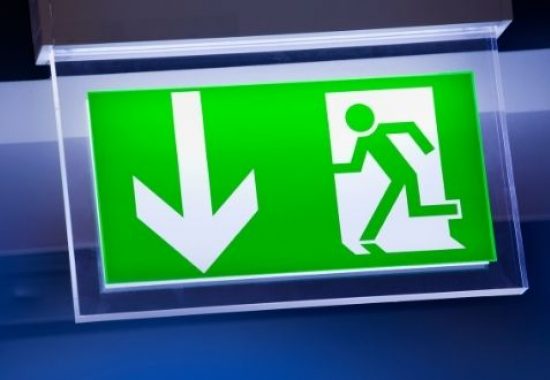
For all public, commercial and high occupancy residential buildings, emergency lighting is a legal requirement. Because of this, emergency lighting products can continuously generate sales and revenue for wholesalers all year round. So, what types of products are available and how should they be installed?
When there’s a mains power breakdown and darkness falls suddenly, emergency lighting is necessary to ensure the environment is safe. Whatever the circumstances of a power cut, darkness poses a real threat to a building’s occupants who would struggle to spot hazards and find an exit route. This would be particularly dangerous in the event of a fire, for example, when panic and confusion can quickly escalate. The purpose of emergency lighting is to ensure that everyone is able to evacuate a building safely.
With this in mind, it falls to electrical wholesalers to ensure they stock a comprehensive and useful selection of emergency lighting. They should also be able to advise on uses, classification and installation requirements in order to assist their customers with finding the right solution.
Emergency lighting covers both standby lighting and emergency evacuation lighting. It is powered by either its own power supply, ‘self-contained’, or by ‘central battery source’ which would be a Static AC/AC system or a Central Power System.
The benefit of a self-contained system is that the initial outlay, installation, and maintenance is faster and cheaper as each luminaire operates independently. It’s also easy to extend self-contained systems with additional luminaires when required.
Central battery source systems have the advantage of being easier to maintain. As there is only one location to consider, the need to isolate and observe individual luminaries that would be needed with a self-contained system is eliminated. Systems operated from a central battery source also have better battery life and are less susceptible to air conditions and ambient pressure as the battery supply is housed in a protective environment.
Generally, the decision for which option to go for comes down to cost, but there are plenty of options for both and in many cases, a combination of two is the best solution to ensure complete protection in the event of a power failure.
Emergency evacuation lighting can be divided into three areas:
The most commonly used luminaires in emergencies are bulkheads, downlights, exit signs and twin spot lights. The choice between these options depends on the space size, use and aesthetic. For example, downlights and twin spots are more commonly found in hospitality venues as they are more discreet in appearance. Bulkheads, on the other hand, have a more industrial feel to them.
After installation, it’s crucial for emergency lighting to be regularly tested which can be done by replicating a mains power failure either manually or automatically. To make this process easier, quicker and more cost-effective, there are a number of self-test emergency lighting systems available.
In the UK, emergency lighting plays a crucial role in health and safety measures as well as being a legal requirement for many buildings. Because of this, installers will need to consult with the building architect, designer, and fire risk assessor to gather definitive advice about where emergency lighting is required. Wholesalers have an excellent opportunity to generate regular sales in this market and should position themselves to advise installers and provide the best combination of products and solutions.
Bridgewater Professionals specialise in recruitment for jobs within the wholesale, distribution and manufacturing industries, recruiting highly skilled individuals at all levels across the UK and Ireland.
If you’re an electrical wholesale, distribution or manufacturing professional interested in developing your career, get in touch with us today.